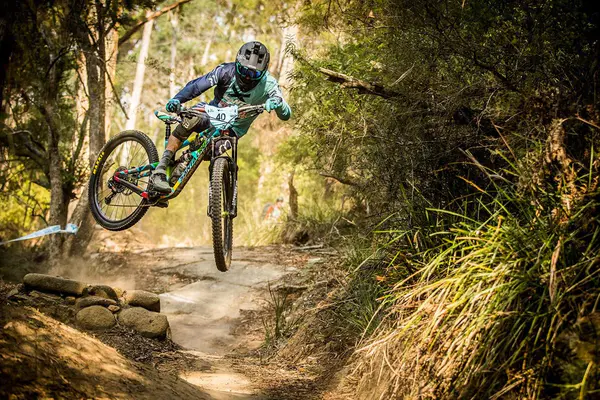Mountain biking is a thrilling outdoor activity that combines physical endurance with the excitement of navigating rugged terrains. For women, finding the right gear is crucial for comfort, safety, and performance. This article delves into the essentials of what women wear mountain biking, covering everything from head to toe.
Helmets
Safety First
Helmets are the most critical piece of protective gear. They protect against head injuries, which can be severe or even fatal in mountain biking. Modern helmets are designed to be lightweight yet robust, providing excellent protection without compromising on comfort.
Types of Helmets
There are two main types of helmets: cross-country (XC) and full-face. XC helmets are lighter and have better ventilation, suitable for less aggressive trails. Full-face helmets provide more coverage and protection, ideal for downhill biking and more technical trails.
Features to Look For
When choosing a helmet, look for features such as adjustable straps, a comfortable inner lining, and ample ventilation. Some helmets also come with visors to shield your eyes from the sun and branches.
Eye Protection
Sunglasses and Goggles
Eye protection is essential to shield your eyes from debris, insects, and UV rays. Sunglasses are suitable for most conditions, while goggles provide a secure fit and better protection in muddy or rainy environments.
Lens Types
Choose lenses based on the riding conditions. Photochromic lenses adjust to changing light conditions, polarized lenses reduce glare, and clear lenses are ideal for low-light or night rides.
Jerseys
Material and Fit
Mountain biking jerseys should be made from moisture-wicking, breathable materials to keep you cool and dry. The fit should be snug but not too tight, allowing for a full range of motion while preventing excess fabric from snagging on branches.
Sleeve Length
Jerseys come in short, three-quarter, and long sleeves. Short sleeves are great for warm weather, while long sleeves offer additional protection against sunburn and minor abrasions.
Pockets and Zippers
Consider jerseys with pockets for easy access to snacks and small tools. Zippers can help regulate body temperature, with full or half-zip options available.
Shorts and Pants
Padding and Fit
Mountain biking shorts and pants should include padding to protect your sit bones during long rides. The fit should be comfortable and allow for freedom of movement, with options for both baggy and form-fitting styles.
Material
Look for durable, abrasion-resistant materials that can withstand rough trails. Some shorts and pants also come with water-resistant coatings for wet conditions.
Length
Choose between shorts, capris, or full-length pants based on the weather and trail conditions. Shorts are versatile for most conditions, while full-length pants provide additional protection in cooler or more challenging environments.
Gloves
Grip and Protection
Gloves improve grip on the handlebars and protect your hands from blisters and abrasions. They also offer some protection in case of a fall.
Types of Gloves
Fingerless gloves provide better ventilation and are ideal for warm weather. Full-finger gloves offer more protection and are suitable for cooler weather or more technical trails.
Padding and Fit
Look for gloves with padding in the palms to absorb shocks and reduce hand fatigue. The fit should be snug but not too tight, allowing for dexterity and comfort.
Footwear
Types of Shoes
Mountain biking shoes should provide good grip and support. There are two main types: clipless and flat pedal shoes. Clipless shoes attach to the pedals for more efficient power transfer, while flat pedal shoes offer more flexibility and are easier to walk in.
Material and Fit
Choose shoes with durable, breathable materials. The fit should be snug but comfortable, with enough room to accommodate swelling during long rides.
Socks
Opt for moisture-wicking, breathable socks to keep your feet dry and comfortable. Compression socks can also improve circulation and reduce fatigue.
See Also: How to Gain Confidence Mountain Biking
Protective Gear
Knee and Elbow Pads
Knee and elbow pads protect against impacts and abrasions. Look for lightweight, flexible pads that offer a good balance between protection and comfort.
Body Armor
For more aggressive riding, consider body armor that protects your chest, back, and shoulders. This gear is essential for downhill and enduro riding, where the risk of falls is higher.
Outerwear
Jackets and Vests
A good jacket or vest can keep you warm and dry in changing weather conditions. Look for breathable, waterproof materials and features like adjustable cuffs and hoods.
Layering
Layering is key to staying comfortable. Start with a moisture-wicking base layer, add an insulating mid-layer for warmth, and finish with a waterproof outer layer if needed.
Accessories
Hydration Packs
Staying hydrated is crucial. Hydration packs allow you to carry water and essential gear without needing a separate backpack. Look for packs with adjustable straps and multiple compartments.
Multitools and Repair Kits
Carry a multitool and a basic repair kit for on-the-go fixes. Essential items include a mini pump, spare tubes, tire levers, and a chain tool.
Conclusion
Choosing the right gear for mountain biking can enhance your performance, comfort, and safety. Prioritize quality and fit, and always be prepared for changing weather and trail conditions. With the right equipment, you can fully enjoy the thrill and adventure of mountain biking.

